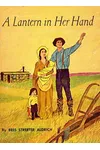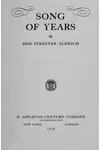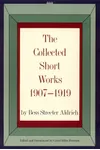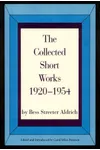Picture a storyteller who spun the dreams and struggles of Midwest pioneers into timeless tales—meet Bess Streeter Aldrich! Born in 1881 in Cedar Falls, Iowa, this American author captured the heart of the prairie with nearly 200 short stories and 13 novels. Her warm, insightful narratives of family, resilience, and community made her one of the highest-paid women writers of her era, blending sentimental charm with vivid realism.
Aldrich’s stories, often set in Nebraska’s small towns, resonate with readers even today. From her iconic A Lantern in Her Hand to the cinematic Miss Bishop, her work celebrates the quiet heroism of everyday life. Let’s dive into the life and legacy of this beloved chronicler of the American heartland!
The Making of Bess Streeter Aldrich
Bess Genevra Streeter grew up as the youngest of eight in a family steeped in pioneer tales. Her parents’ stories of 1850s Iowa sparked her imagination, planting seeds for her future works. After graduating from Iowa State Normal School in 1901, she taught in Iowa and Utah, honing her storytelling craft. In 1907, she married Charles “Cap” Aldrich, a former army captain, and they settled in Elmwood, Nebraska, in 1909. There, amidst raising four children, Bess began writing, winning a 1911 Ladies’ Home Journal contest that launched her career.
Tragedy struck in 1925 when Charles died suddenly, leaving Bess a widow. Writing became her lifeline, supporting her family while cementing her reputation. Her early pen name, Margaret Dean Stephens, gave way to her own as she gained confidence, weaving her Elmwood experiences into her stories.
Bess Streeter Aldrich’s Unforgettable Stories
Aldrich’s novels and short stories paint the Midwest with authenticity and heart. Her breakout novel, The Rim of the Prairie (1925), blends romance and pioneer grit, introducing readers to her signature style: realistic settings paired with sentimental plots. A Lantern in Her Hand (1928), her most famous work, follows Abbie Deal’s journey through love and sacrifice on the Nebraska frontier, earning global acclaim for its emotional depth.
Miss Bishop (1933), adapted into the 1941 film Cheers for Miss Bishop, showcases a dedicated teacher’s triumphs and tragedies, highlighting Aldrich’s knack for strong female characters. Spring Came on Forever (1935) weaves a multi-generational saga of love and perseverance, uniting two families across decades. Her 160+ short stories, published in magazines like Saturday Evening Post and Collier’s, often explored small-town life, with collections like The Man Who Caught the Weather (1936) earning accolades, including an O. Henry Prize.
Aldrich’s style blends romantic realism with meticulous research, grounding her tales in historical detail. Her themes—family bonds, resilience, and hope—resonate with readers seeking stories of human connection, making her a favorite among young women and families.
Why Bess Streeter Aldrich Matters
Bess Streeter Aldrich’s impact lies in her ability to immortalize the Midwest’s pioneer spirit. Her stories, rooted in real-life struggles and joys, offered readers a window into America’s heartland, inspiring hope during tough times like the Great Depression. Her strong, relatable heroines challenged stereotypes, showing women as pillars of family and community.
Her legacy endures through honors like the 1934 Honorary Doctor of Letters from the University of Nebraska and her 1973 induction into the Nebraska Hall of Fame. The Bess Streeter Aldrich Foundation preserves her Elmwood home as a museum, inviting fans to explore her world. Her works continue to captivate, reminding us of the power of ordinary lives told extraordinarily.
- Born: February 17, 1881, Cedar Falls, Iowa
- Key Works: A Lantern in Her Hand, Miss Bishop, Spring Came on Forever
- Awards: O. Henry Prize (1928), Nebraska Hall of Fame (1973)
- Died: August 3, 1954, Lincoln, Nebraska
Ready to step into the prairie’s embrace? Grab A Lantern in Her Hand and discover Bess Streeter Aldrich’s heartwarming tales of resilience and love!


















